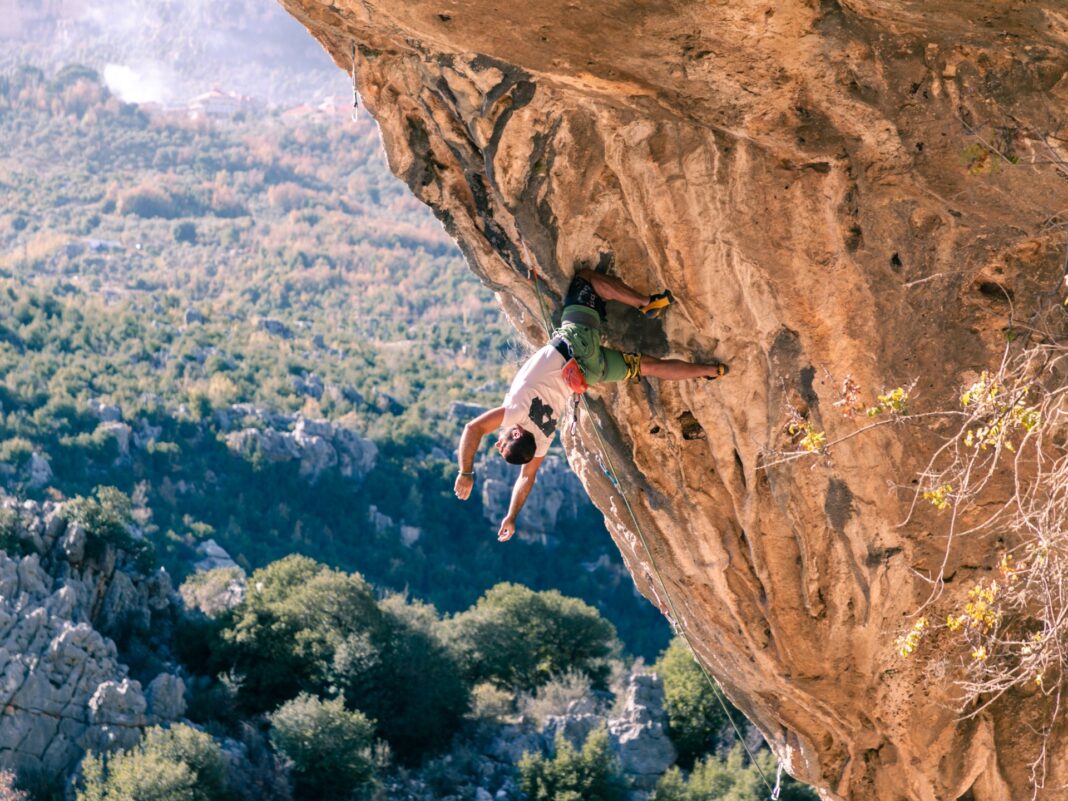Among the terraced olive groves of northern Lebanon, a young man with sharp features and a shaved head ties a rope onto a harness around his hips. Nareg is quiet, pensive, rehearsing in his mind the movements his body is about to grapple with under stress.
A couple of local boys from the largely Maronite Christian town of Tannourine watch silently among the spring wildflowers and rocky contours below the cliff. Nareg checks the knot on his harness one last time, his girlfriend Tracy securing the other end of the rope, and then begins to climb.
Rock climbing, a sport rapidly gaining popularity in Lebanon, has its own local heritage associated with the cliffs of Tannourine.
Over half a century ago, Georges Massoud, from the town itself, gripped the sharp slate grey limestone with his hands and bare feet. He free-soloed the cliffs just to the right of where Nareg is climbing today, without a rope, to set quail traps on thin rock ledges.
Below, his stone home is still nestled between the cliffs and St. Jacob Hermitage. Locals say it’s the oldest continually inhabited house in Lebanon, potentially for over 500 years. Both his wife and son thought he was crazy for traversing the cliffs. But today, a climbing route here bears George’s name, a memorial to an early maverick by a generation of young Lebanese climbers.
Nareg dances upwards, seemingly weightless, while 30 other climbers – Lebanese and foreigners alike – pair off for their own climbs.
For Lebanon’s circle of climbers, the reasons why they climb are multifaceted. But one thing they all share in common is a loving devotion to this tightly-knit and diverse community.







